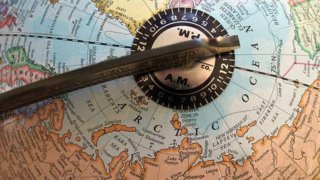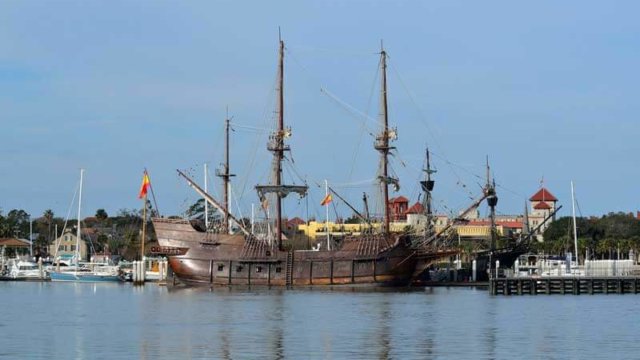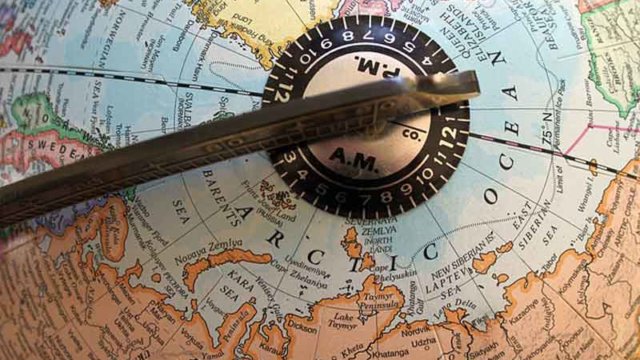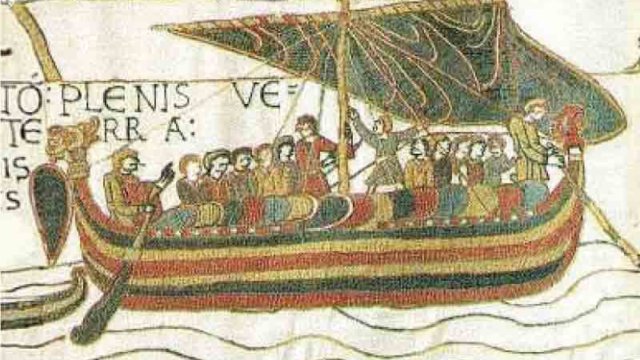中学校の地理で必ず習うのが、グリーンランドが世界最大の「島」で、オーストラリアが世界最小の大陸であるということ。
しかし、ぼくが中学生のとき、地理の先生はその線引きの理由までは教えてくれなかった。
しかも当時、資料としてよく使われたメルカトル図法だと、グリーンランドがオーストラリアより大きく見えることもあり、いったいどういう理屈で「大陸」と「島」が分けられているのか、さっぱりわからなかった。

緑:グリーンランド 橙:オーストラリア
$200inaire / CC BY-SA
そればかりか、先生に「ユーラシアとアフリカって、陸続きだから一つの大陸なんじゃないの?」と質問しても、しばしの沈黙ののち「別、別なんです!」と説明にならない説明で逃げられてしまう始末である。
あれから30年、なぜオーストラリアからが大陸扱いなのかという謎に迫るべく、今日も辞書を片手にブリタニカ百科事典を紐解く……
この記事はEncyclopedia Britannica(ブリタニカ百科事典)の記事Is Australia an Island?からの引用を元に、独自研究を加えて自分なりの見解をまとめたものです。
目次
世界最小の大陸 オーストラリア
オーストラリアはブラジルより小さい
At about 3 million square miles (7.7 million square km), Australia is the smallest continent on Earth. In fact, it’s closer in size to Greenland than it is to South America. Does that make Australia an island like Greenland?
continent 大陸 In fact 実際のところ
実のところオーストラリアの国土面積は、世界で6番目とかなり大きい。しかし大陸として考えるとかなり小ぶりで、オーストラリアはブラジル単体よりも小さいのである。
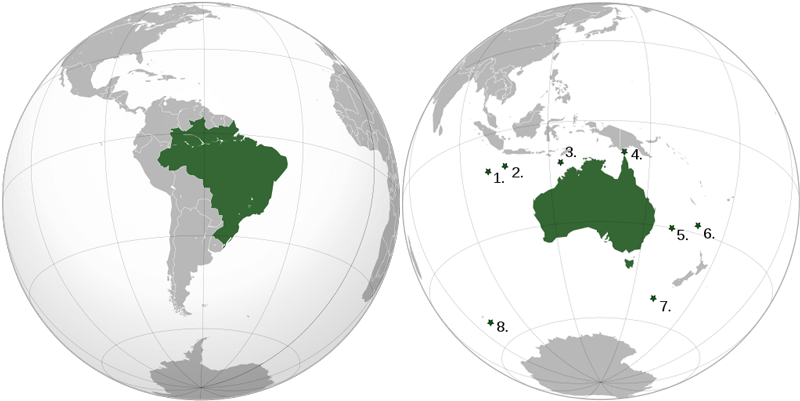
オーストラリアの地図の★2は、コロナ禍でオーストラリアに帰国することになった同国民を、検疫のため14日間にわたって隔離した場所として有名になったクリスマス島。
Ssolbergj / CC BY(左)
File:Australia (orthographic projection).svg: Ssolbergj / derivative work Glen Fergus / CC BY-SAsvg:(右)
もちろん、オーストラリアは大陸としては世界最小で、南極大陸よりも小さい。

Heraldry / CC BY-SA(左)
File:Australia (orthographic projection).svg: Ssolbergj / derivative work Glen Fergus / CC BY-SAsvg:(右)
オーストラリアに対する地理学者の見解
Although Australia is sometimes called an “island continent,” most geographers consider islands and continents to be separate things. According to Britannica, an island is a mass of land that is both “entirely surrounded by water” and also “smaller than a continent.” By that definition, Australia can’t be an island because it’s already a continent.
geographer 地理学者 separate 分ける mass 大きなかたまり land 陸地 definition 定義
これは…トートロジーにしか聞こえないが、つまり、島とは「大陸より小さい」ものだが、オーストラリアは「大陸」なので、「大陸より小さい」という定義から外れる。故に、オーストラリアは大陸である。以上、証明終わりってことかいな。
But in that case, what’s the difference between Australia and Greenland? Why isn’t Greenland (at 836,000 square miles [2,165,230 square km]) considered a continent instead of just the world’s largest island? Unfortunately, there isn’t a strict scientific definition of a continent. But there are a few criteria that are commonly used to distinguish one continent from another.
instead of …の代わりに strict 厳密な criteria 基準 distinguish 区別する
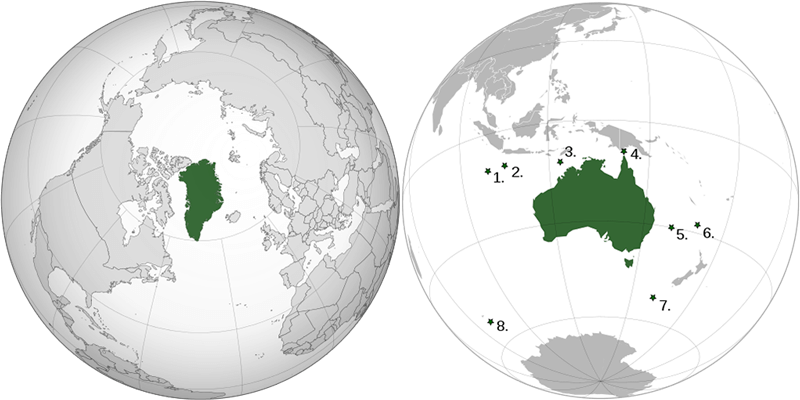
Connormah / CC BY-SA(左)
File:Australia (orthographic projection).svg: Ssolbergj / derivative work Glen Fergus / CC BY-SAsvg:(右)
オーストラリアが大陸とみなされる理由
地質学的な理由による区分
First, there is a geological distinction. While Australia and most of Asia are situated on separate tectonic plates, Greenland shares a tectonic plate with North America.
geological 地質学的な distinction 区分 tectonic plates 構造プレート(テクトニックプレート)
おっ、これは大陸移動説でよく耳にする、プレートテクトニクス理論の話かな。それなら図を見た方が早そうだ。
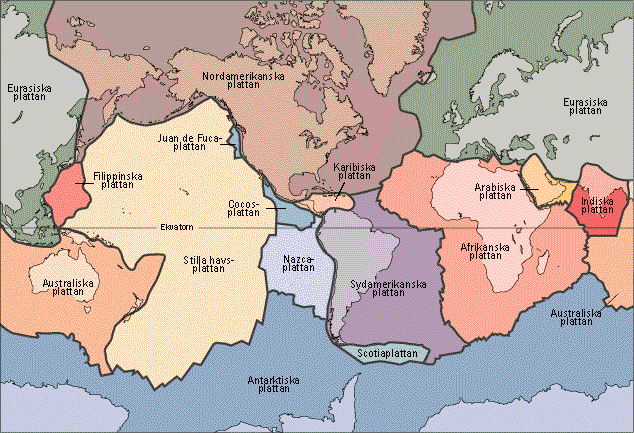
生物学的理由による区分
Second, there is a biological distinction. While a large percentage of Australia’s plant and animal species can be found nowhere else in the world, fewer of Greenland’s species are unique.
biological 生物学上の species (動植物分類上の)種 nowhere else 他にない
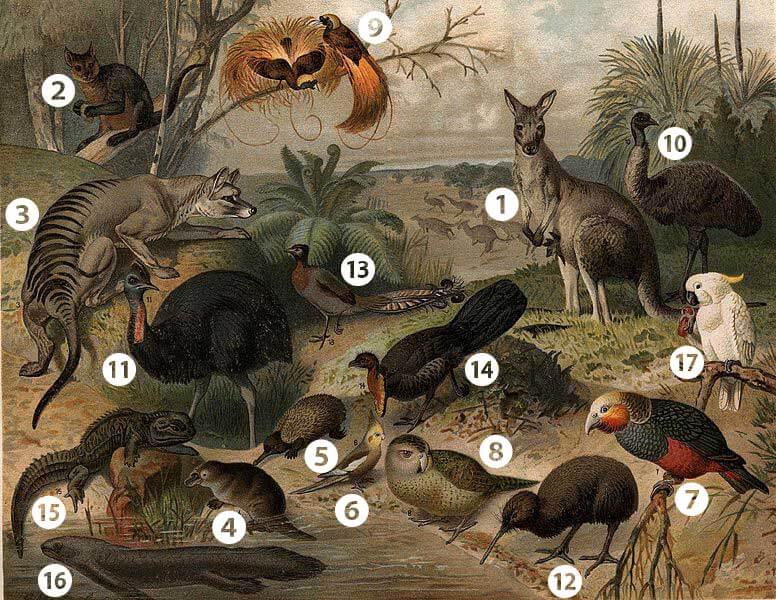
Nordisk familjebok / Public domain
- カンガルー(人類より先にボクシングを極めた動物として有名)
- キノボリカンガルー(カンガルーの樹上生活バージョン)
- フクロオオカミ(有袋類の狼 1936年に絶滅)
- カモノハシ(哺乳類なのに卵を生むは、クチバシがあるは…で有名)
- ハリモグラ(名前にモグラがついているけど、モグラの一種というわけではない。トゲに覆われている割には、けっこう捕食されることが多いらしい)
- オカメインコ(名前にインコがついているけど、実は世界最小のオウムである)
- ミヤマオウム(ケアオウムとも呼ばれる。ニュージーランド固有種)
- フクロウオウム(フクロウのくせに空を飛べない。絶滅危惧種であと数百羽しかいない。ニュージランド固有種)
- 極楽鳥(ド派手なカラーリングで有名。ドラクエにも出演歴あり)
- エミュー(飛べない鳥。エミューの肉は食用として市場に出回っている)
- ヒクイドリ(飛べない鳥。喉の赤い肉だれが特徴)
- キーウィ(ニュージーランドの飛べない鳥。同国の国鳥)
- コトドリ(音マネの達人。カメラのシャッター音やチェーンソーの音まで再現することができる)
- ヤブツカツクリ(かろうじて飛べるが、飛べる鳥の中では最低レベルの飛翔能力しかないオーストラリアの鳥)
- ムカシトカゲ(名前にトカゲとついているが、トカゲの一種というわけではない。恐竜の時代からその形を変えておらず、「生きた化石」と呼ばれている)
- オーストラリアハイギョ(こちらも「生きた化石」と呼ばれる古代魚。肺魚という文字の通り、肺呼吸できる)
- キバタン(白色オウムの一種。ペットとしても人気)
確かにオーストラリアは外の世界と異なる生態系で、なんかあそこだけ別世界という感じはある。
すると、大陸の定義ってのは、必ずしも地質学的な問題だけでなく、生物学的な特色など、他の要因も考慮して決めているってわけか。

人類学的理由による区分
Third, there is an anthropological distinction. Aboriginal people are limited to Australia, while indigenous Greenlanders belong to a group of peoples (the Inuit) found throughout the Arctic, including parts of Canada, the United States, and Russia.
anthropological 人類学の aboriginal people アボリジニー(オーストラリアの先住民) indigenous 土着の Inuit イヌイット族 Arctic 北極地方の
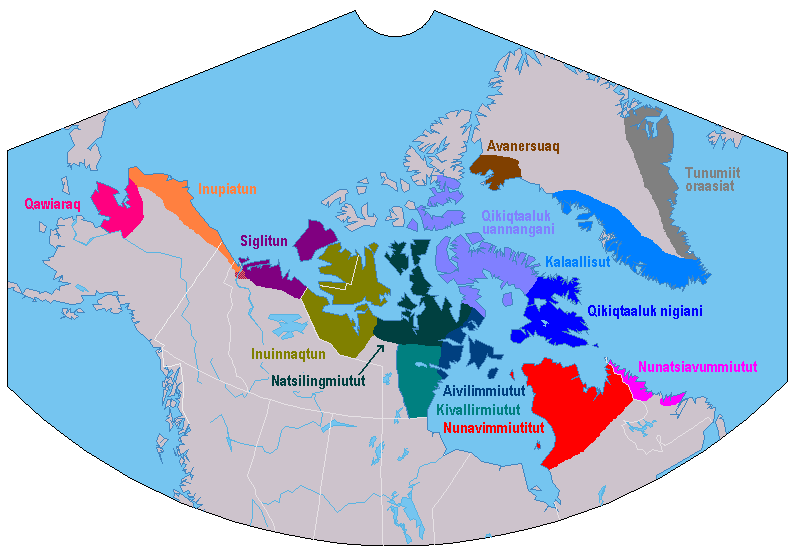
Diderot / CC BY-SA
文化的理由による区分
While each of those criteria may not be sufficient on its own—for instance, Europe and Asia also share a tectonic plate but are usually considered separate continents for cultural reasons—together they form a general understanding of what qualifies as a continent.
sufficient 十分な for instance たとえば qualifies 〜の条件を満たす
土地の大きさによる区分
Of course, there’s also the basic matter of size. Australia is nearly four times as large as Greenland. If they were much closer in area, Greenland might have more of a case for continent status (and Australia for island status). As it is, the vast difference between the two makes for a good dividing line.
more of a いっそう as it is (しかし)実情は vast 多大な
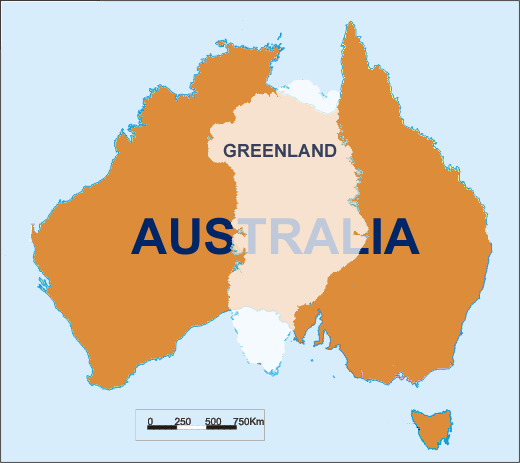
【大陸を区分する主な基準】
1、地質学的な理由(構造プレート)による区分。
2、生態系の違いによる区分。
3、人類学的な理由による区分。
4、文化の違いによる区分。
5、土地の大きさによる区分。
※これらの諸々の要因を考慮した結果、大陸と島のついては、オーストラリアとグリーンランドのところで線引きするのがちょうどいいんじゃね? ということらしい。

